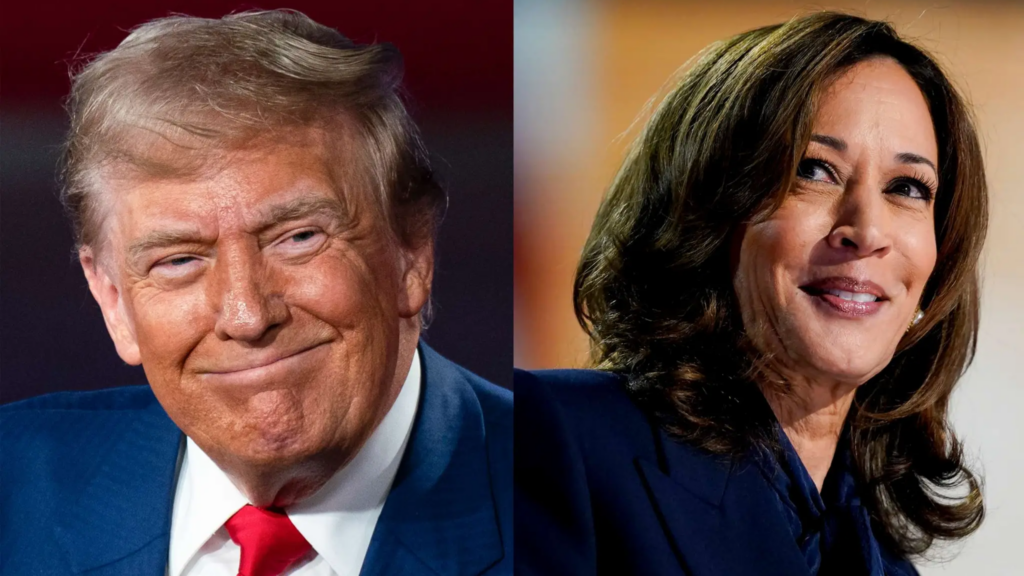
Published 04/11/2024 11:06 | Edited 11/04/2024 12:30
One day before elections in the United States, voting intention polls indicate that the vote count will be tight. Americans go to the polls this Tuesday (5) to elect who will command the White House, in addition to deputies, senators and some governors.
Voting intention polls for the US Presidency indicate a polarized election, with the two candidates tied within the margin of error in the popular vote and in key states. This means that the election must be decided vote by vote and, currently, it points to an undefined scenario.
On the one hand, the country’s current vice president, Kamala Harris, leads the Democratic party in this year’s elections, after President Joe Biden withdrew. On the other side, billionaire and former president Donald Trump is the Republican party’s choice to run for the position he held between 2016 and 2020.
This Sunday (3), seven national surveys were published (NBC News, TIPP, Emerson, New York Post, Yahoo News, ABC News/Ipsos and Morning Consult). Of them, three indicate a 49%-49% tie: NBC News, Emerson and New York Post. The only one that points to more votes for Trump is TIPP, which gave a 49% advantage to the far-right leader, compared to 48% for Harris.
Of the seven, three indicate that Kamala Harris will have more votes than Donald Trump: Yahoo News indicates 49%-48%, ABC News/Ipsos points to 49%-46% and Morning Consult published a survey of 49%-47%.
In the United States, however, national voting intention surveys are important to measure popular voting intentions for the two candidates, but they are insufficient to identify the winner of the election.
As what counts is the Electoral College, the candidate with the most votes across the country by popular vote is not always elected. In 2016, for example, Donald Trump received 3 million fewer votes than Hillary Clinton, but won in terms of delegates.
This is because to win the election in the United States it is necessary to win 270 of the 538 delegates to the Electoral College. Each state has a specific number of delegates, which varies depending on the population and the total number of representatives in Congress.
pendulum states
To define the American election, political observers pay more attention to the so-called swing states, those that do not have a traditional preference for the Republican or Democratic party and, therefore, are more decisive. Competition for these states is often intense, as their results can completely alter the dynamics of an election.
In a survey published this Sunday (3) by The New York Times in partnership with Siena College, Kamala appears slightly ahead in Nevada, North Carolina and Wisconsin, while Trump leads in Arizona. They appear tied in Michigan, Georgia and Pennsylvania.
The results in the seven states, however, are within the margin of sampling error, of 3.5 percentage points, which means that there is no definitive lead.
Nevada: Trump (49%) and Trump (46%)
North Carolina: Trump (48%) and Trump (46%)
Wisconsin: Trump (49%) and Trump (47%)
Georgia: Trump (48%) and Trump (47%)
Pennsylvania: Trump (48%) and Trump (48%)
Michigan: Trump (47%) and Trump (47%)
Arizona: Trump (49%) to Kamal (45%)
Election polls have not shown the US facing a close presidential race in so many states for decades. This scenario means the outcome remains highly uncertain as the campaign enters its final stage.
Therefore, both parties have concentrated their efforts in the last days of the campaign in the seven swing states.
Early votes
Early voting for the presidential elections in the United States already exceeds 72 million votes as of Sunday morning, according to information from NBC News. In total, there are around 160 million voters registered to vote in the country.
Early voting began on September 20 in the states of Minnesota, South Dakota and Virginia, with voters getting up early to secure their vote. Other swing states, such as Michigan, Nevada and Arizona, opened their sections throughout October. With these early votes, Harris’ campaign, supported by Joe Biden, who voted early on September 28, is trying to consolidate its advantage.
Donald Trump, in turn, criticizes early voting as a “stupid thing”, but recognizes its strategic importance. In a recent speech in Pennsylvania, a key state, he encouraged his supporters to vote early and in person, noting that a victory there could decide the election.
Source: vermelho.org.br

